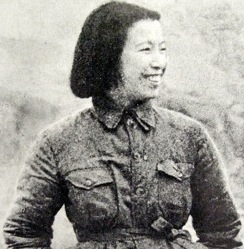Shanghai Goes Red
By Erick Yax-Vidal
The Shanghai Times
January 10,1967
SHANGHAI- Last week Zhang
Chuqian a member of the “Gang Of Four” took the position of mayor and power in
Shanghai after accepting the demands of workers who hijacked a train last week.
They had given the demands to the now former mayor but he did not agree to
them.
It all started exactly seven days
ago when 2,500 Workers Headquarters members joined together at the Shanghai
railway staion and took over a train bound for Beijing. The train was ordered
to stop at a Anting station approximately 20 miles north of Shanghai. Leaders
from Shanghai sent workers family members to tell the workers to stop, instead
of the family members stopping them they were won over and joined the movement.
Three days later Zhang met the
workers and held a nine hour meeting in which he agreed to the demands telling
them that they had support from Chairman Mao and other leaders in Beijing and
convinced them to go back to Shanghai. There he held a televised meeting for
thousands to watch where he formally signed their demands.
Knowing that Mao had not agreed
with the demands a furious Chen Pixian said “Zhang Chuqian signs and catches us
all with our pants down!” He wasn't wrong in saying this, Zhang had gotten them off guard. You could see the furiosity in his eyes when he said it.
Current mayor Zhang Chuqian said "I did what I thought necessary for the revolution And I am Proud to say that the workers are back doing what they should be, working!
Current mayor Zhang Chuqian said "I did what I thought necessary for the revolution And I am Proud to say that the workers are back doing what they should be, working!



